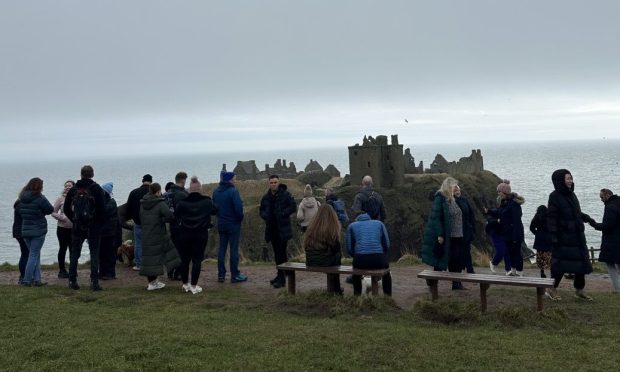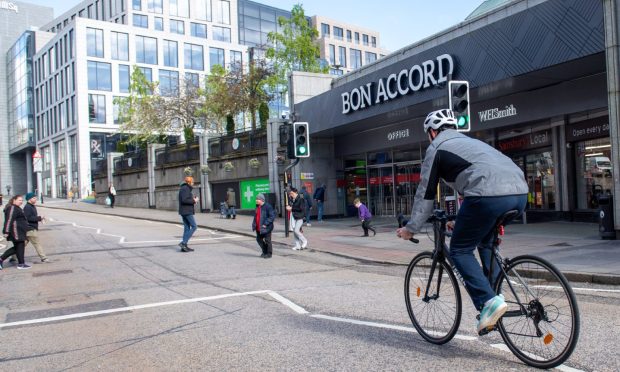Hundreds of farmers could try to have wind turbine deals struck with the council torn up following a landmark ruling by the Scottish Government.
A businessman has won his battle to stop making payments towards affordable housing as part of a condition of his planning permission.
And the local authority could lose out on hundreds of thousands of pounds a year if other developers manage to overturn similar agreements.
James Norrie was given the go-ahead to erect three turbines on his land at Cairnhill near Turriff in 2014 – on the condition he would pay £1,870 a year towards housing projects in the town.
Earlier this year he applied to Aberdeenshire Council to have the payments – part of a Section 75 legal agreement – stopped.
Planning officers agreed with him that it was no longer “reasonable” to expect him to pay, but councillors rejected his application amid fears they would be “opening the floodgates” to farmers with similar developer obligations.
Mr Norrie, who faced paying as much as £46,750 over the lifespan of the turbines, appealed to the Scottish Government, and ministers have now ruled in his favour.
Yesterday, he declined to comment on his victory, but said reports of his fight against the council had initially painted him as a “villain” in his own community.
He hired Ian Downie, of Balmedie firm Case Consulting Ltd, to prepare his case to the Scottish Government’s planning and environmental appeals division.
Last night, Mr Downie said his client – in common with farmers across the north-east – continued to contribute greatly to their towns and villages, and branded Aberdeenshire Council’s policy of using Section 75 agreements a “festering sore”.
Mr Downie said: “He was painted as seeking to shirk his responsibilities, and that was a problem – he was the good guy in this.
“Any contribution the council seeks must pass five standard tests – necessity, planning purpose, relationship to the development, scale and kind, and reasonableness.
“In James’s case, for affordable housing, it failed four out of five.
“There was absolutely no basis on which the council should have sought that contribution.
“There is a significant problem here, especially if the council has spent the money and has to repay it. It’s certainly not a way a planning authority should be run.
“There’s no consistency on Section 75 agreements – it varies from applicant to applicant and it must be seen as a festering sore for the planning authority.”
Mr Downie has represented farmers across the north-east who have had their developer obligations removed and predicted “hundreds” could now come forward with their own case against the local authority.
Mike Rawlins, a member of Turriff’s community council, which objected to Mr Norrie’s initial appeal to the council, said he was disappointed with the Scottish Government’s ruling.
He added: “If you sign up to a certain set of obligations, then you should stick to them.
“You can’t chop and change to suit yourself, is our belief, and it’s disappointing that the Scottish Government has sided with the developer.
“I would imagine there will be an increase in the number of developers looking to remove their obligations.
“The small amount that he was paying wasn’t really going to make a huge difference to Turriff, but it’s the principle.”
And Formartine councillor Jim Gifford, who was a member of the committee which tried to block Mr Norrie’s attempt to scrap the payments, said developers reneging on agreements was happening “far too often”.
“It’s not a great position for us to be in,” he said.
“Sometimes the only safeguards we have are the conditions we put in. If that gets taken away retrospectively that leaves us in a very difficult position.”
Councillor Gifford, the leader of Aberdeenshire’s Conservative group, added: “This puts councils and councillors in a very difficult position because we have absolutely no certainty that what we’re saying at the time of a planning decision is what will happen in the future.
“It opens the floodgates. There are a whole raft of Section 75 agreements that were in place that people can now possibly take out.
“The obligations are not there to extract more money from developers, they’re there to compensate the effect a development has on the community.
“The council doesn’t have money from other sources to pay for this – yet another source of funding has been taken away from us.
“You can’t fault developers for playing the system that is put in front of them. The fault is with the system.”
A spokeswoman for Aberdeenshire Council was unable to comment last night.










